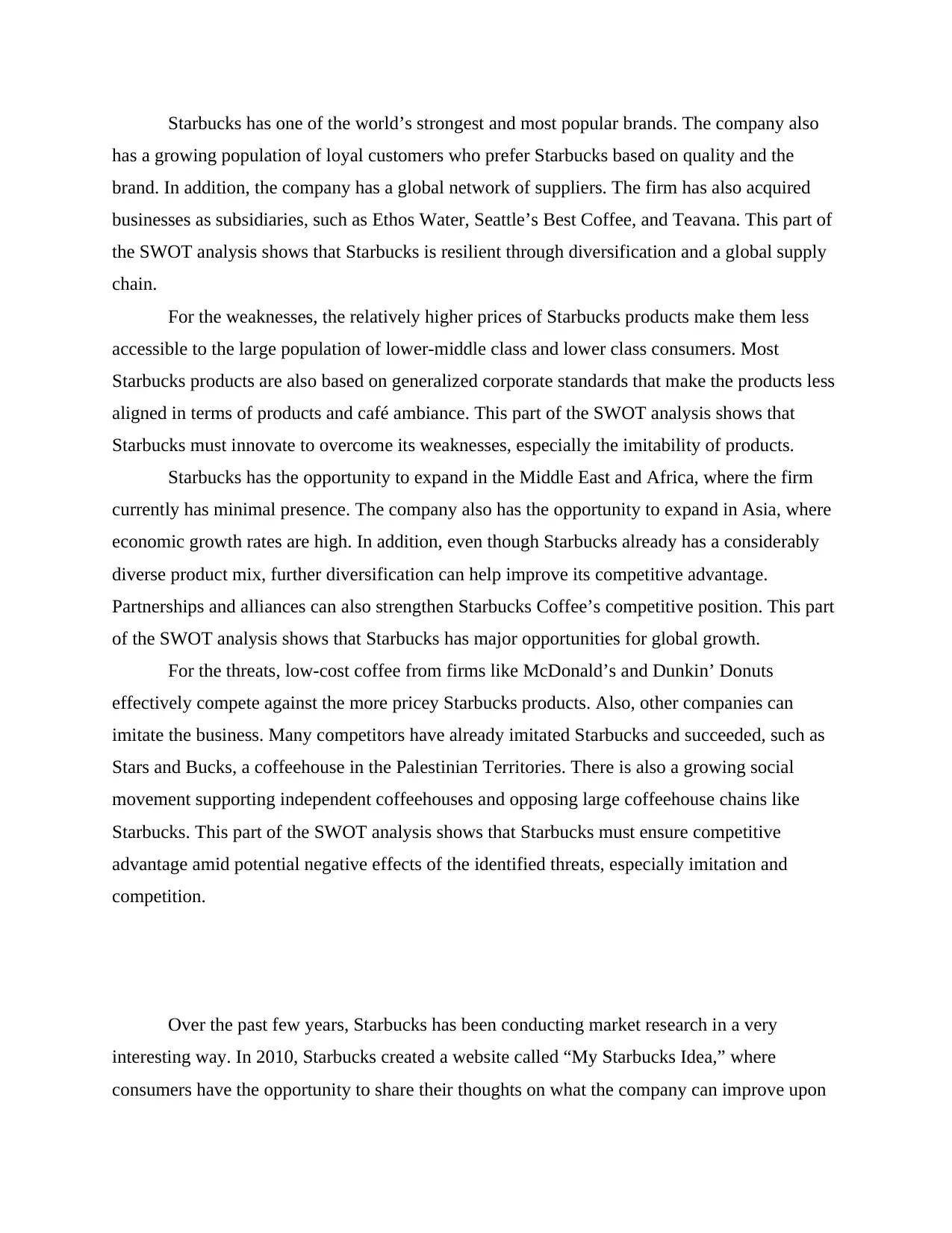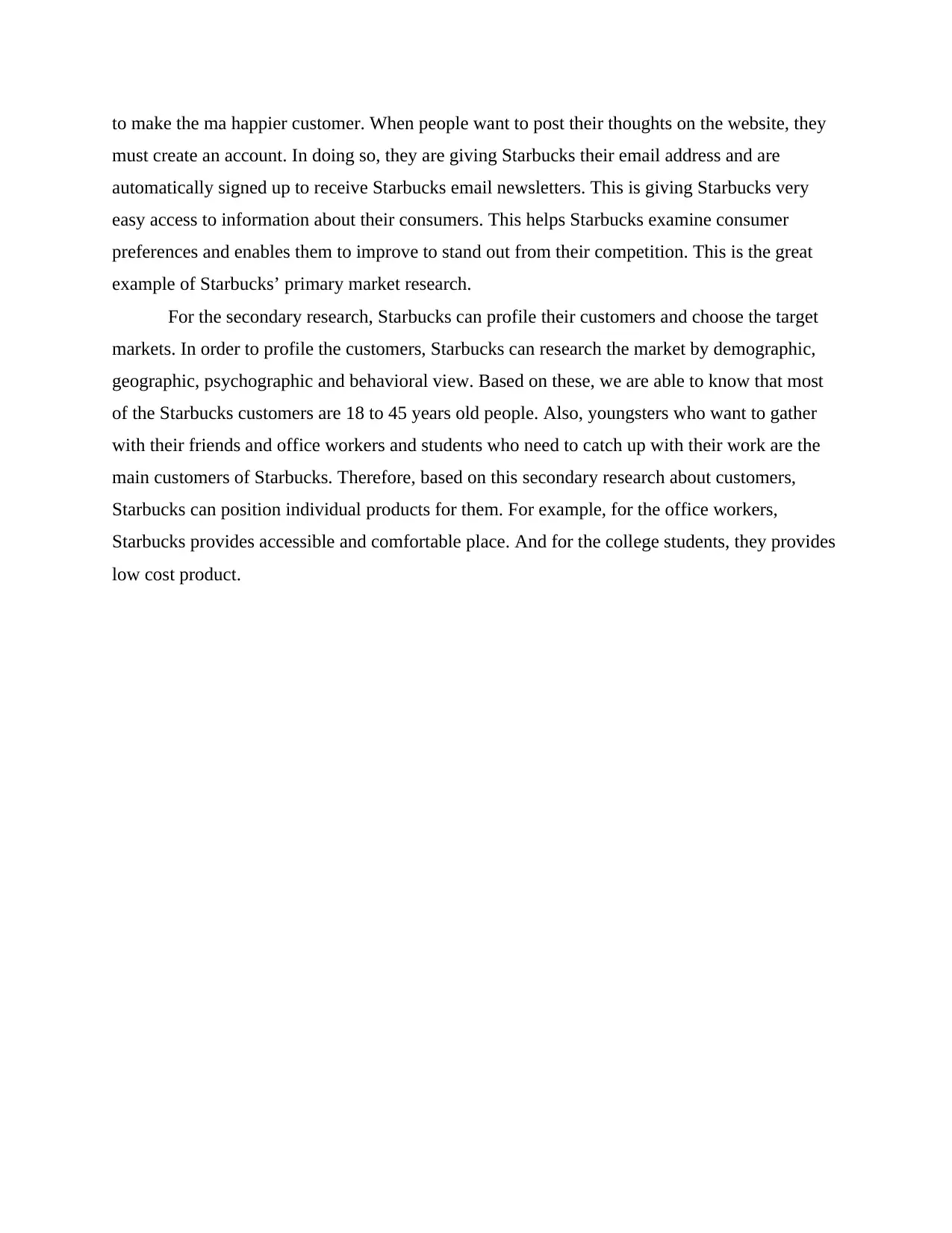Starbucks SWOT Analysis and Market Research Report for Marketing
VerifiedAdded on 2019/09/16
|2
|626
|218
Report
AI Summary
This report provides a SWOT (Strengths, Weaknesses, Opportunities, and Threats) analysis of Starbucks, examining its competitive position and market strategies. The analysis highlights Starbucks' strong brand, global presence, and customer loyalty, while also pointing out weaknesses like higher prices and the potential for imitation. Opportunities for expansion in new markets and product diversification are also discussed. The report explores Starbucks' market research methods, including the "My Starbucks Idea" website, which allows the company to gather consumer feedback and preferences. It also examines the use of demographic, geographic, psychographic, and behavioral data to profile customers and target specific market segments, such as office workers and students. The report concludes by emphasizing the importance of understanding the competitive landscape and consumer behavior for Starbucks' continued success.
1 out of 2







![[object Object]](/_next/static/media/star-bottom.7253800d.svg)